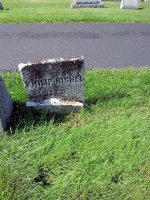It's a little hard to read. It appears to be some sort of a contract for farm land published in 1828 in Pennsylvania. Is this a deed? What is it called? Are any of the sames in this document known or familiar? Any information would help. Thanks in advance.
Attachments
-
 20220315_002325.jpg1.1 MB · Views: 78
20220315_002325.jpg1.1 MB · Views: 78 -
 20220315_002337.jpg865.8 KB · Views: 88
20220315_002337.jpg865.8 KB · Views: 88 -
 20220315_002357.jpg972.1 KB · Views: 90
20220315_002357.jpg972.1 KB · Views: 90 -
 20220315_002434.jpg1.7 MB · Views: 88
20220315_002434.jpg1.7 MB · Views: 88 -
 20220315_002451.jpg1.5 MB · Views: 89
20220315_002451.jpg1.5 MB · Views: 89 -
 20220315_002518.jpg1.7 MB · Views: 80
20220315_002518.jpg1.7 MB · Views: 80 -
 20220315_002528.jpg1.3 MB · Views: 73
20220315_002528.jpg1.3 MB · Views: 73 -
 20220315_002545.jpg881.9 KB · Views: 77
20220315_002545.jpg881.9 KB · Views: 77







